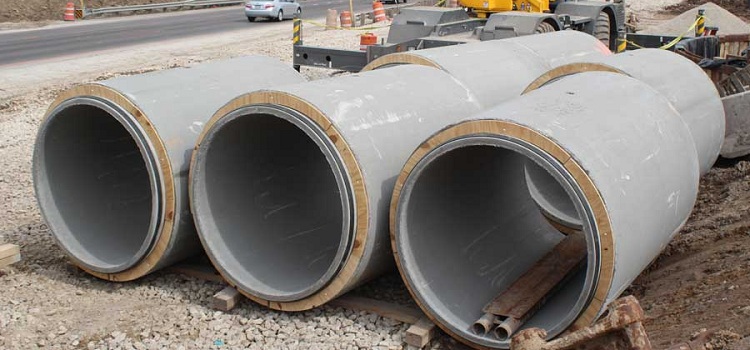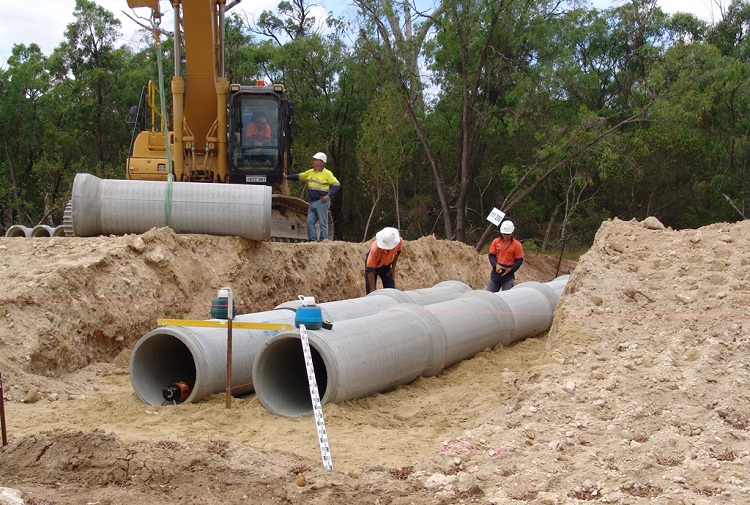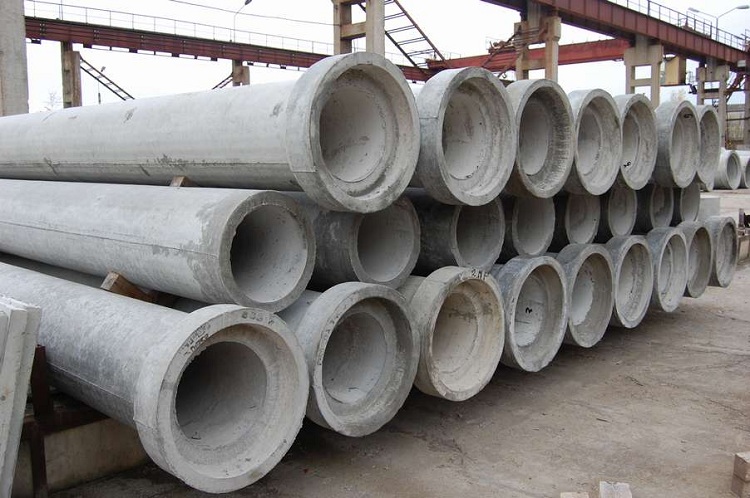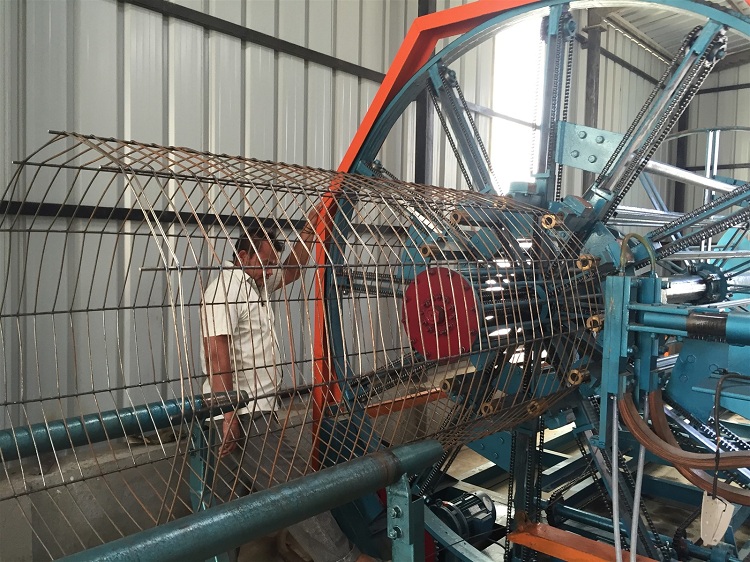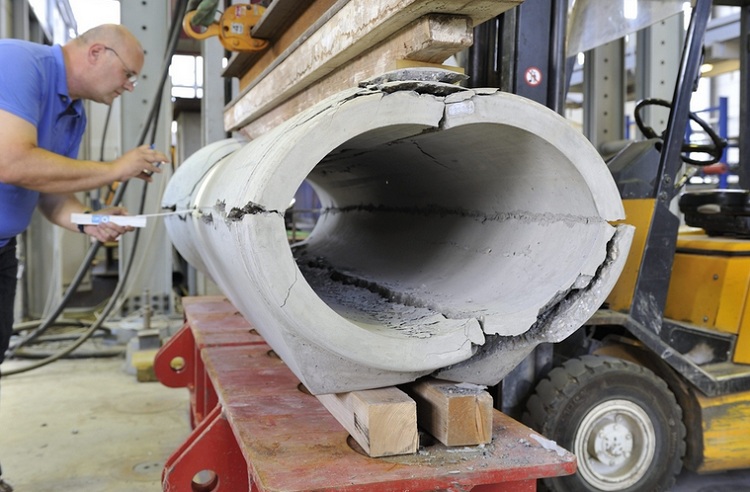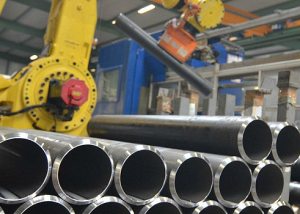The fundamental GOST 6482 88 establishes the technical conditions and defines the general technical requirements for the manufacture, use, transportation and storage necessary in our living conditions, as well as in the industry of reinforced concrete pressureless pipes. The state standard establishes the procedure for testing products for compliance with the specified quality parameters of pipes, describes measures for the acceptance of finished products. The provisions of the standard contain the geometric parameters of the product line, the qualitative and quantitative composition of the material from which the pipes are made, describes the main technological aspects in the manufacture of products.
Content
- 1 Definition of technical conditions, requirements
- 2 Key quality parameters for manufactured products
- 3 The order and principles of pipe reinforcement in production
- 4 Quality control and acceptance of products in accordance with the provisions of GOST 6482 88
- 5 The procedure for transportation and storage of products
Definition of technical conditions, requirements
Specifications, regulatory requirements for non-pressure reinforced concrete pipes determine the main types and types of product, parameters, sizes, ability to bear the load, ways to strengthen the shape of the structure depending on the load characteristics. Brands of products are determined based on the properties of the product, its purpose. The characteristics of the pipes are described.
This standard applies and regulates the production of pipes made of reinforced concrete bell-shaped, as well as, rebated construction, round shape. Products are intended for installation as part of sewage systems and water drains. They are also used for pressure-free transportation of liquids that do not act aggressively on such material as reinforced concrete.
The parameters, geometric dimensions of the pipes produced are standardized by product type:
- T - bell-shaped pipes, the joints of which are sealed with the help of various sealing materials;
- TP - made with the bottom sole;
- TB - have a collar in the design located on the inner surface of the joint;
- TBP - construction with a special sole;
- TS - bell-shaped concrete pipe with a stepped joint;
- TSP - with a sole;
- TFP - seam pipe made with a sole.
According to their ability to bear the load of the pipe (to withstand the height of the layer of backfill soil) are divided into three regulatory groups:
- 1 g - the height of the backfill layer up to 2 meters;
- 2 gr. - soil layer up to 4 meters;
- 3 gr. - soil layer up to 6 meters.
The table of the main parameters of pipe sizes, which are defined in GOST 6482 88 and on the example of a concrete pipe of type T, is located below.
Table 1
| Type, pipe size | Diameter (mm) | Pipe dimensions (mm) | The mass of the pipe (tons) | |||||||||
| de | di | d1 | d2 | t | l | l1 | l2 | l3 | l4 | |||
| T160.50 | 1600 | 1600 | 1840 | 1870 | 2130 | 120 |
5000 |
5110 | 110 | 200 | 145 | 8,7 |
| T140.50 | 1400 | 1620 | 1400 | 1650 | 1890 | 110 | 135 | 7,0 | ||||
| T120.50 | 1200 | 1420 | 1200 | 1450 | 1690 | 6,0 | ||||||
| T100.50 | 1000 | 1200 | 1000 | 1230 | 1450 | 100 | 5100 | 100 | 150 | 125 | 4,8 | |
| T80.50 | 800 | 800 | 960 | 990 | 1170 | 80 | 105 | 3,0 | ||||
| T60.50 | 600 | 600 | 720 | 750 | 890 | 60 | 85 | 1,7 | ||||
| T50.50 | 500 | 500 | 620 | 650 | 790 | 1,4 | ||||||
| T40.50 | 400 | 400 | 500 | 530 | 650 | 50 | 75 | 0,95 | ||||
The main characteristics for the pipes are as follows:
- During manufacture, the product must be watertight.
- Durability of pipes is determined in various operating conditions at low temperatures, as well as in the ratio of concrete and reinforcement, in the grades of steel used in production.
- The norms of deviations from the geometric dimensions of products established by the standard, the correspondence of their external and internal forms, the dimensions of defects such as shells, influxes of concrete and cavities, cracks are regulated.
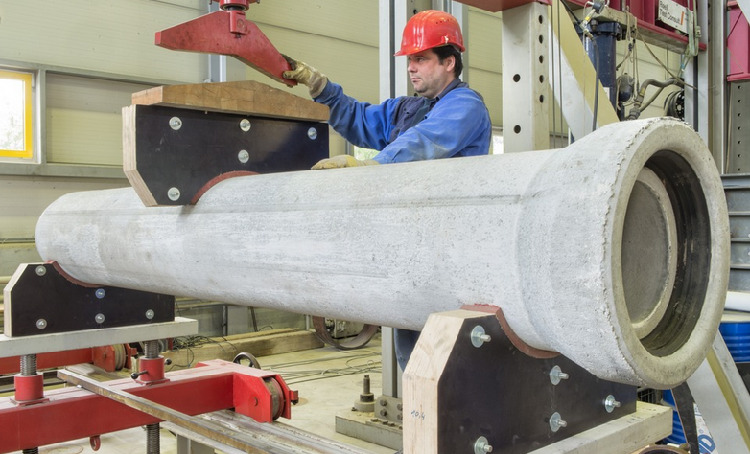
According to GOST, after the release of pipes, they are checked for their quality and compliance with the necessary parameters
Key quality parameters for manufactured products
The main indicators of the quality of reinforced concrete pipes are based on their ability to long-term operation in various conditions, as well as their ability to withstand designed loads and provide throughput when transporting liquids, precipitation or the contents of storm sewers.
Such important indicators include the moisture resistance of the pipes, which meets the requirements of the W4 brand; by the ability to hold hydrostatic pressure, which should be at the level of 0.05 MPa.
Note! An important component of strength is the concrete grade, which should correspond to the strength class in terms of compression ratio B25.
Moisture absorption should not exceed 6% by weight of the product. Important indicators of product quality are the acceptance quality of its components and manufacturing material. In addition to the concrete forming the product, high requirements are also imposed on the reinforcing components: reinforcement, rolled wire, and other welded structural parts.
Such types of pipes as a flange version, a flange version and a sole, step joints must be equipped with special rubber o-rings. In the manufacture of products, marking is applied to the surface of the bell. If the pipe is folded, such an inscription is made at the end of the pipe. The designation is carried out as prescribed by the standard GOST 1315-2.
The order and principles of pipe reinforcement in production
In order for non-pressure reinforced concrete pipes to correspond to qualitative and geometric indicators, concrete products are made using a reinforcing frame, which makes the product strong and resistant to any loads. The standard assumes compliance with all necessary procedures for preparing the product for the production of procurement of materials for reinforcing the appropriate quality and quantity defined by this GOST.
All reinforcement work is carried out in accordance with the documentation developed by this standard:
- Drawings of reinforcing frameworks of all types of pipes produced, according to this GOST.
- Specifications are being prepared for steel reinforcement products, metal consumption per pipe, taking into account the diameter of the nominal bore. Calculations are carried out in accordance with the reinforcement drawings for the type of product.
- All forms, sizes of armoframes, their descriptions and sizes are presented as a part of GOST.
- Material consumption specifications are given in the corresponding tables.
The standard reinforcement for concrete bell-shaped pipes allows for the separate manufacture of a reinforcing cage for both the cylindrical and the bell-shaped parts of the pipe. Welding of frames is carried out by the spot contact method defined in the provisions of GOST 14098-85.
Helpful information! To ensure that the protective top layer of concrete is uniform over the entire surface of the mold, special fixatives are used. They are installed around the entire perimeter of the frame with an interval of 500-600 millimeters.
Reinforcing cylindrical frame elements interconnect the frame set. According to the requirements of the standard, the connection along the perimeter of the frame is made through two orders of longitudinal bonds. The length ratio is as follows:
- pipe length up to 5 meters - 6 rows of fixation;
- up to 3.5 meters - 5 rows of fixation;
- up to 3 meters - 4 rows.
Concentric and longitudinal frame reinforcement is welded at each intersection. Welded joints in the frames are only staggered. In some special cases, at the request of the customer, two embedded products are installed in the pipes, which are designed to protect against the effects of electrocorrosion. In the manufacture of such mortgages are designed and placed in the product along one pipe line. If the pipe is made with a sole, such mortgages are mounted along the upper segment of the pipes.
Quality control and acceptance of products in accordance with the provisions of GOST 6482 88
GOSTs of non-pressure reinforced concrete pipes regulate their production acceptance. It is based on the following indicators:
- in accordance with the results of tests on strength indicators, water resistance, frost resistance, water absorption capacity;
- according to the strength indicators of concrete, the identity of reinforcing cages with working drawings, checking the geometric shapes of products;
- correspondence of the thickness of pouring concrete to the reinforcing cage, surface quality of products, the presence of cracks, chips, and other surface defects.
Such technical indicators as conformity to geometric shapes are carried out on all product sizes in a selective manner. Acceptance is carried out according to the results of spot checks. Checks for water absorption, water tightness are carried out once every three months. Continuous control is carried out for butt joints of products. The quality of the surface of the socket of the product and the sleeve is subject to verification. Selective control of these nodes is possible if their shapes are controlled before pouring concrete.
Note! Tests for the ability to withstand loads by destroying the product may not be performed if non-destructive testing methods are available.
Reinforced concrete non-pressure pipes undergo a series of quality control and compliance tests. Quality control methods are fixed in the provisions of GOST and must be strictly carried out by the manufacturer. Serial products pass a series of tests:
- strength testing of pipes by the method of loading;
- hydrostatic production tests for water resistance;
- pipe inspection for frost resistance and water absorption.
The entire list of mandatory product tests is carried out strictly with the provisions of the standards for each of its types. They are the basis for obtaining a quality certificate for a product, the right to use it, and the manufacturer’s warranty obligations to the customer-consumer.
The procedure for transportation and storage of products
The transportation, storage and warehousing of products - reinforced concrete pipes have their own standards and specifications. The main rules should be highlighted:
- products are stored by brand and in stacks;
- if the length of the pipes does not exceed 5 meters, they can be stored in an upright position;
- the stability of the products, a convenient location for the entrance must be observed.
The row of pipes during storage, depending on the size of the diameter is shown in the table of the standard.
table 2
| Pipe diameter in mm | Row of pipes vertically |
| 400 – 1000 | 4 |
| 1200 | 3 |
| 1400 – 2400 | 2 |
To prevent the collapse of the stack of products under the lower pipes install safety pads.
